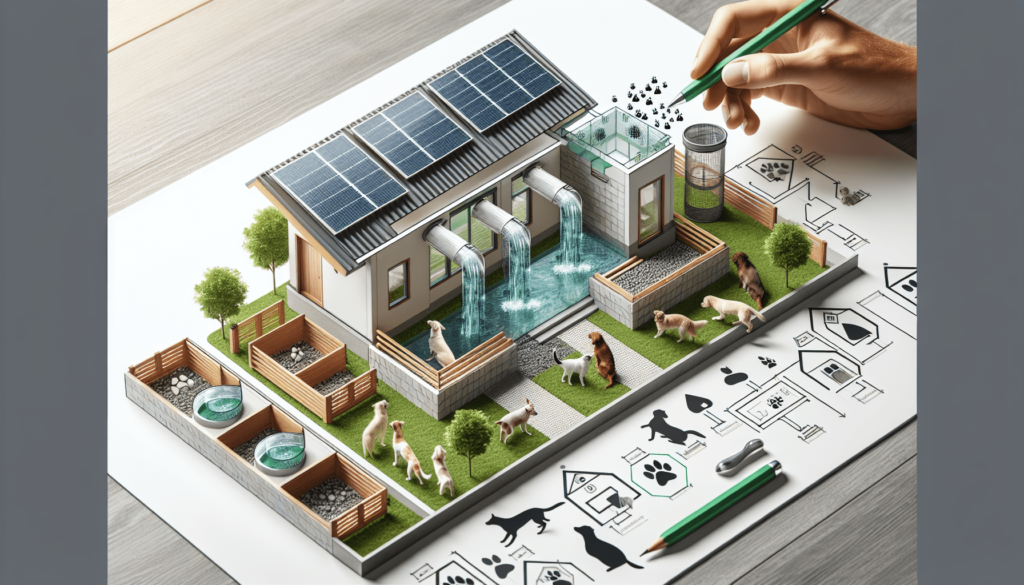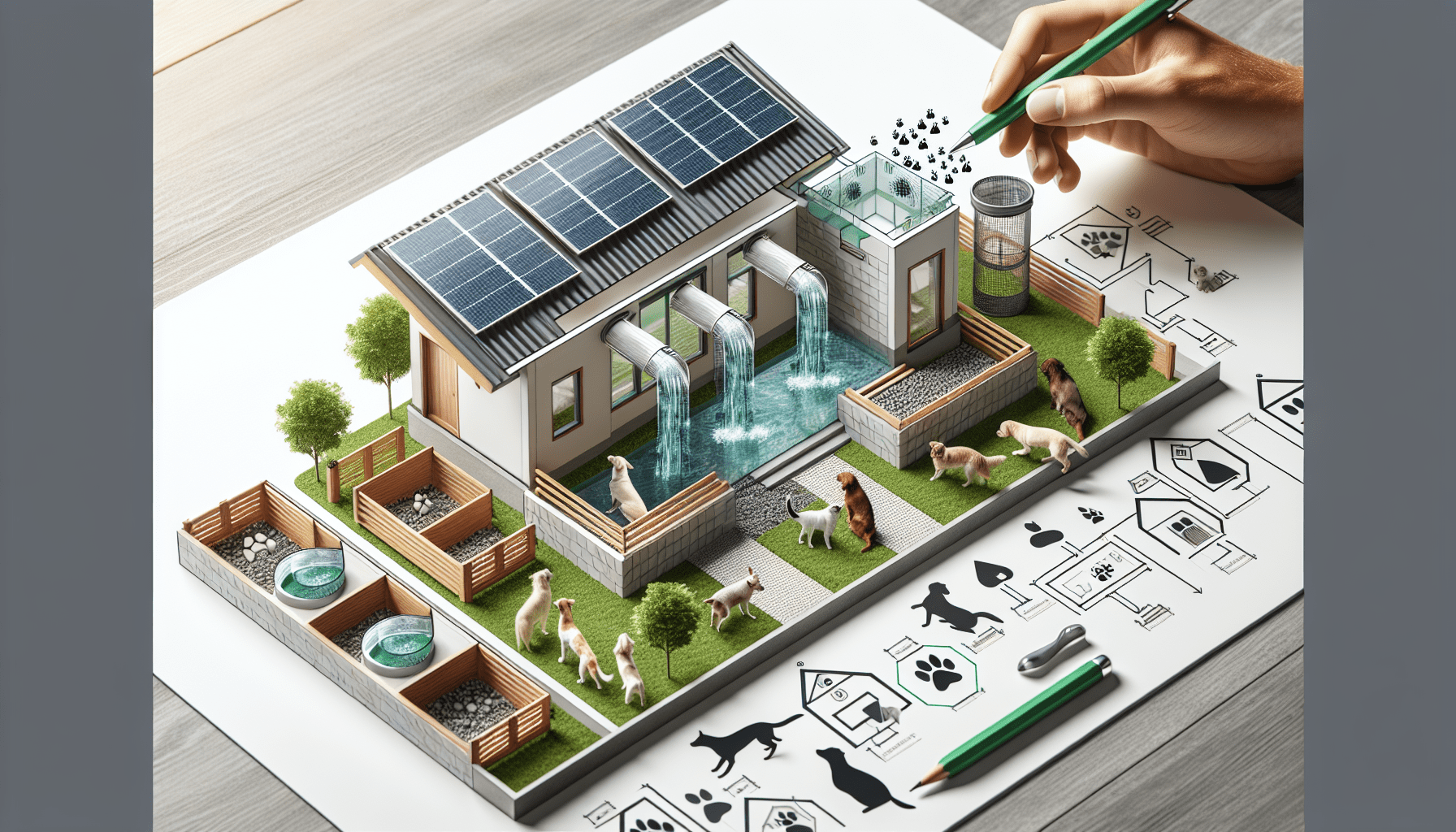How To Build A Sustainable Pet Shelter
Are you considering building a pet shelter but want to do it in a sustainable and eco-friendly way? This article will guide you through the process of creating a pet shelter that not only provides a safe and comfortable environment for animals but also minimizes its impact on the environment. Let’s get started!

Planning Your Sustainable Pet Shelter
Before you start building your sustainable pet shelter, it’s essential to have a solid plan in place. Take some time to consider the following factors:
-
Location: Choose a location that is easily accessible for both animals and staff. Consider factors such as noise levels, proximity to residential areas, and availability of utilities.
-
Size: Determine the size of the shelter based on the number of animals you plan to accommodate. Make sure to include separate areas for different species and enough space for outdoor exercise.
-
Budget: Establish a budget for the construction of the shelter, including materials, labor, and permits. Consider incorporating sustainable practices to reduce long-term costs.
By carefully planning out these factors, you can ensure that your pet shelter meets the needs of both animals and staff while also being eco-friendly.
Sustainable Materials and Construction Methods
When building a sustainable pet shelter, it’s essential to choose materials and construction methods that minimize environmental impact. Consider the following options:
-
Recycled Materials: Use recycled materials whenever possible, such as reclaimed wood, recycled steel, and eco-friendly insulation. Not only does this reduce waste, but it also helps lower your carbon footprint.
-
Energy-Efficient Design: Incorporate energy-efficient design elements, such as solar panels, LED lighting, and energy-efficient appliances. These features can help reduce energy consumption and lower utility costs in the long run.
-
Green Roof: Consider installing a green roof on your pet shelter, which can help reduce stormwater runoff, provide insulation, and create a habitat for wildlife. Green roofs also help improve air quality and reduce the urban heat island effect.
By choosing sustainable materials and construction methods, you can create a pet shelter that is not only environmentally friendly but also cost-effective in the long term.
Water Conservation and Management
Water conservation is essential when building a sustainable pet shelter. Implement the following practices to reduce water usage and manage water effectively:
-
Rainwater Harvesting: Install a rainwater harvesting system to collect rainwater for use in irrigation and cleaning. This can help reduce your reliance on municipal water sources and lower utility costs.
-
Low-Flow Fixtures: Use low-flow fixtures in bathrooms and animal watering stations to reduce water consumption. Consider installing automatic shut-off valves to prevent water waste.
-
Greywater Recycling: Implement a greywater recycling system to treat and reuse wastewater from sinks, showers, and laundry facilities. This can help reduce water usage and minimize the impact on local water sources.
By incorporating water conservation practices into your pet shelter, you can reduce water consumption, lower utility costs, and minimize your environmental footprint.
Indoor Air Quality and Ventilation
Indoor air quality is essential for both animals and staff in a pet shelter. Ensure proper ventilation and air quality by following these guidelines:
-
Natural Ventilation: Design the shelter to maximize natural ventilation through windows, vents, and skylights. This can help improve air circulation and reduce reliance on mechanical ventilation systems.
-
Air Filtration Systems: Install air filtration systems to remove allergens, odors, and pollutants from the air. Consider using HEPA filters to ensure clean and healthy air for animals and staff.
-
Non-Toxic Materials: Choose non-toxic materials for flooring, paint, and furnishings to prevent off-gassing and indoor air pollution. Look for eco-friendly options that are free of harmful chemicals.
By prioritizing indoor air quality and ventilation in your pet shelter, you can create a healthy and comfortable environment for animals and staff alike.

Outdoor Spaces and Enrichment
Outdoor spaces are essential for the well-being of animals in a pet shelter. Create engaging and enriching outdoor environments by following these tips:
-
Natural Elements: Incorporate natural elements such as trees, grass, and rocks into outdoor enclosures to provide a more stimulating environment for animals. Consider adding climbing structures and perches for enrichment.
-
Shade and Shelter: Provide ample shade and sheltered areas in outdoor spaces to protect animals from the elements. Consider adding awnings, trees, and shelters to offer respite from sun, rain, and wind.
-
Play Areas: Design outdoor play areas with toys, agility courses, and interactive features to encourage exercise and mental stimulation. Rotate toys and change up the layout to keep animals engaged and entertained.
By creating well-designed outdoor spaces with plenty of enrichment opportunities, you can enhance the quality of life for animals in your pet shelter and promote their physical and mental well-being.
Waste Management and Recycling
Proper waste management and recycling practices are essential for maintaining a clean and sustainable pet shelter. Follow these guidelines to minimize waste and promote recycling:
-
Composting: Implement a composting program for organic waste, such as food scraps and plant materials. Use the compost in gardening projects or donate it to local farms for use as fertilizer.
-
Recycling Stations: Set up recycling stations throughout the pet shelter for staff and visitors to properly dispose of recyclable materials. Provide clear signage and education on what can be recycled.
-
Reducing Single-Use Items: Encourage staff to use reusable items such as water bottles, cups, and utensils to reduce waste. Offer incentives for using reusable items or provide alternatives to single-use plastics.
By adopting waste management and recycling practices, you can reduce waste, promote sustainability, and create a clean and eco-friendly environment in your pet shelter.
Conclusion
Building a sustainable pet shelter involves careful planning, thoughtful design, and a commitment to environmentally friendly practices. By incorporating sustainable materials, water conservation techniques, indoor air quality measures, outdoor enrichment opportunities, and waste management strategies, you can create a pet shelter that not only provides a safe and comfortable environment for animals but also minimizes its impact on the environment. Remember to continuously evaluate and improve your sustainability efforts to ensure the long-term success and effectiveness of your pet shelter. Thank you for taking the initiative to build a sustainable pet shelter – the animals and the environment will thank you for it!

